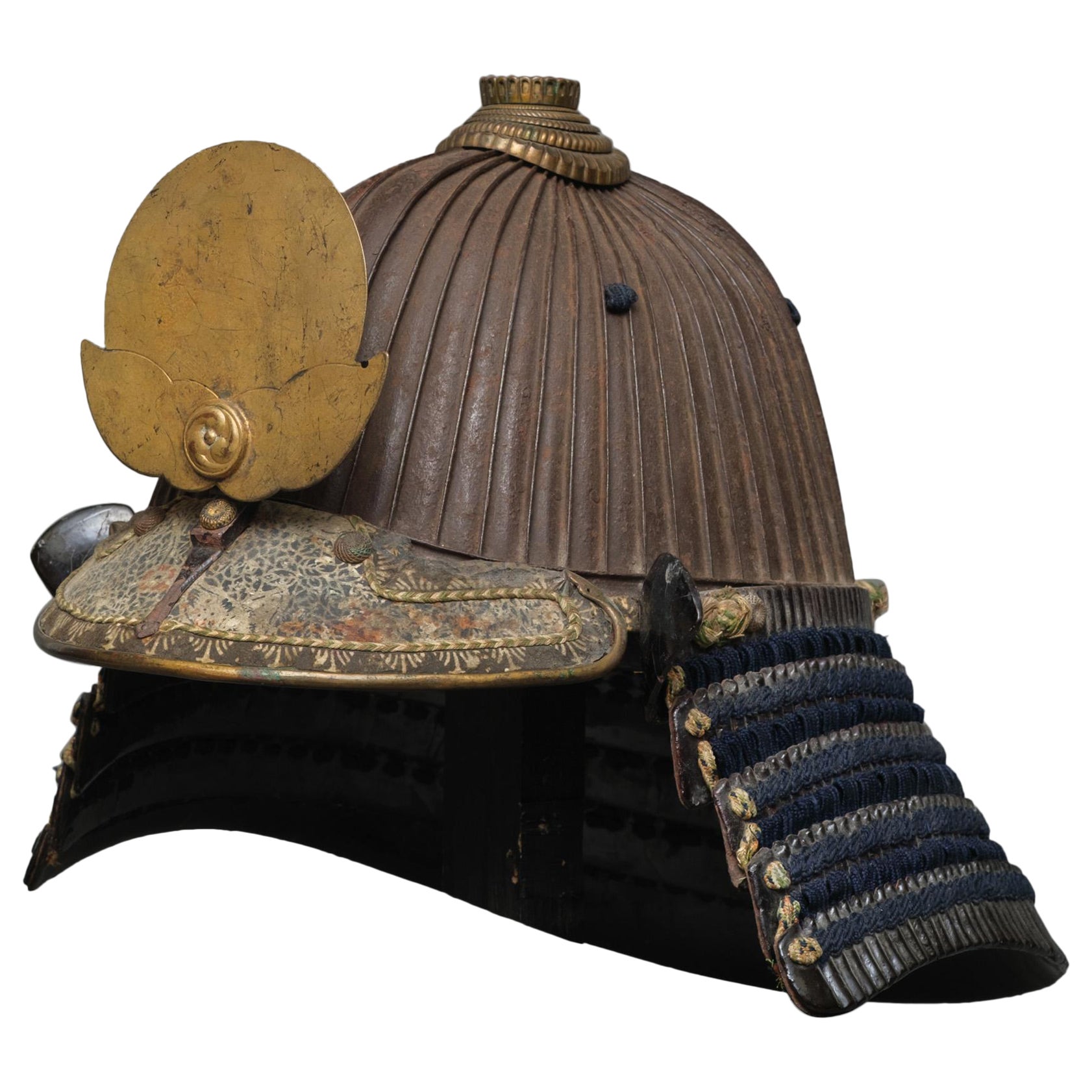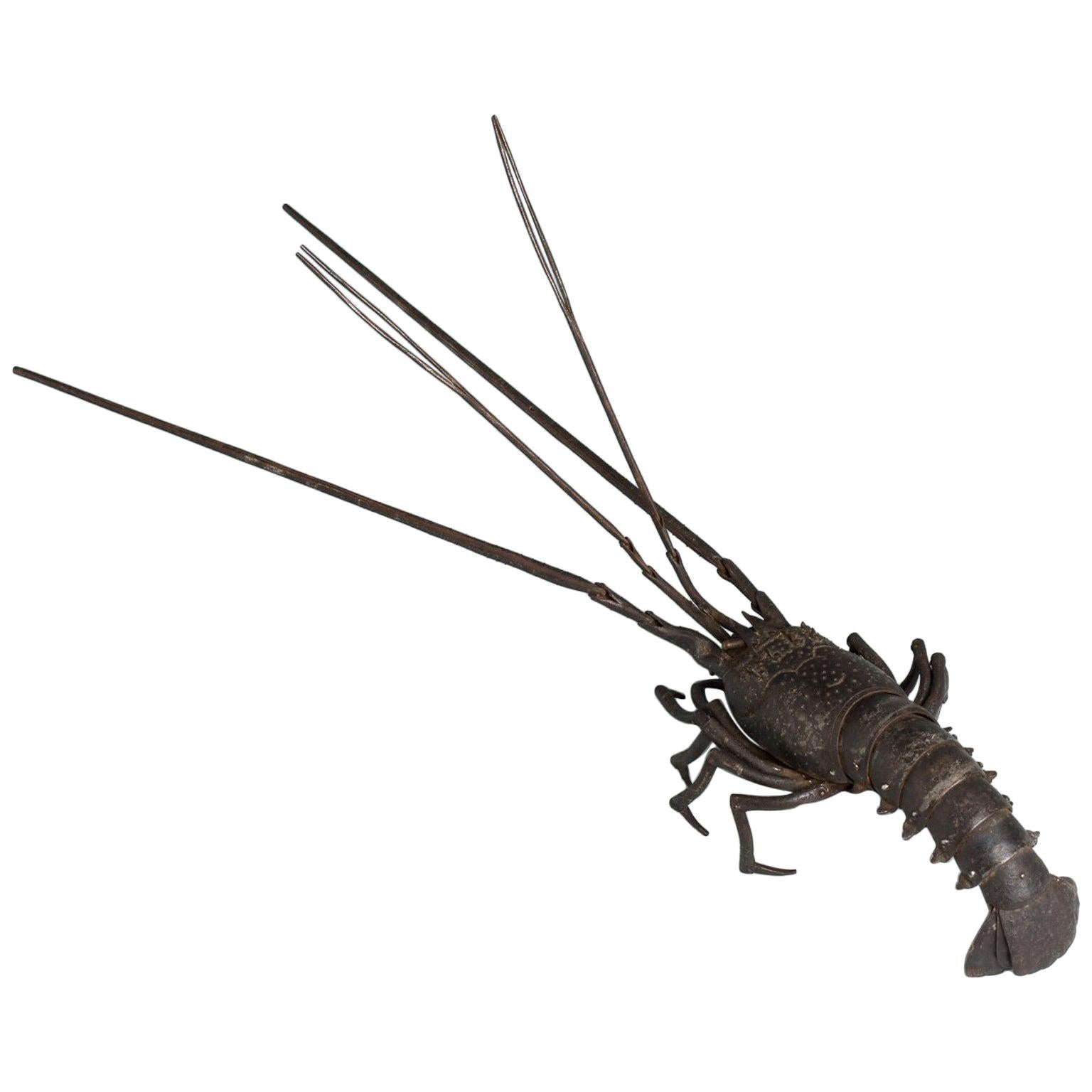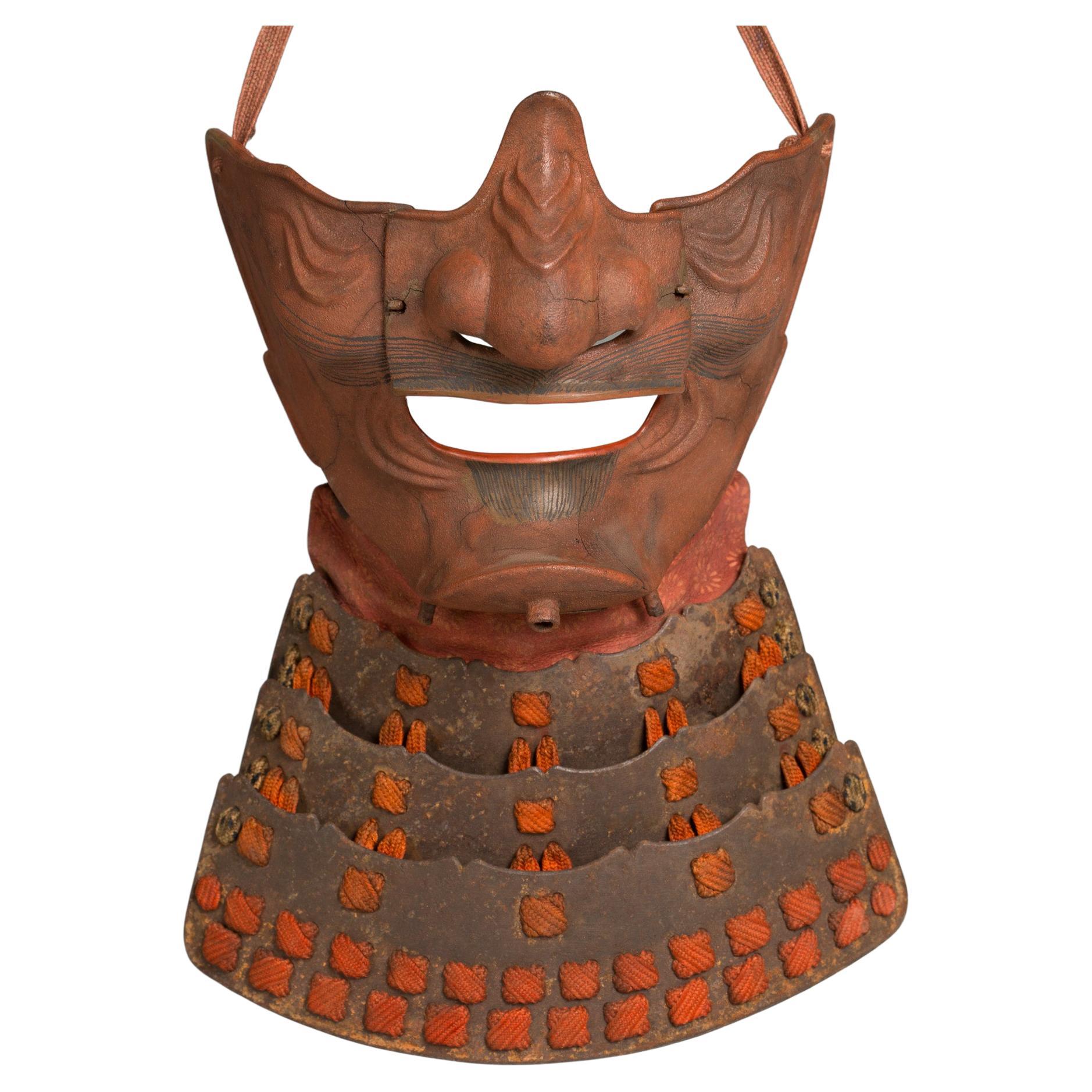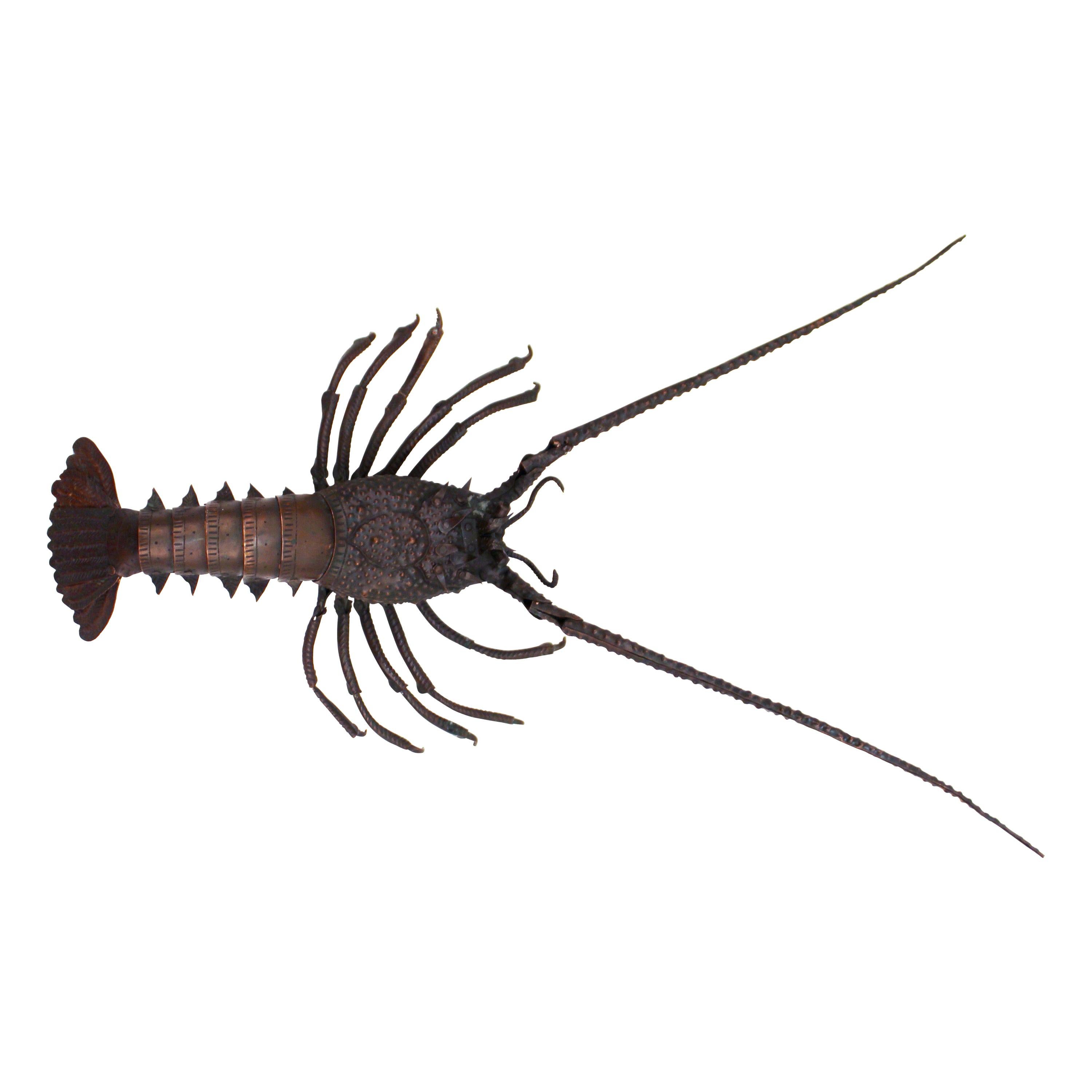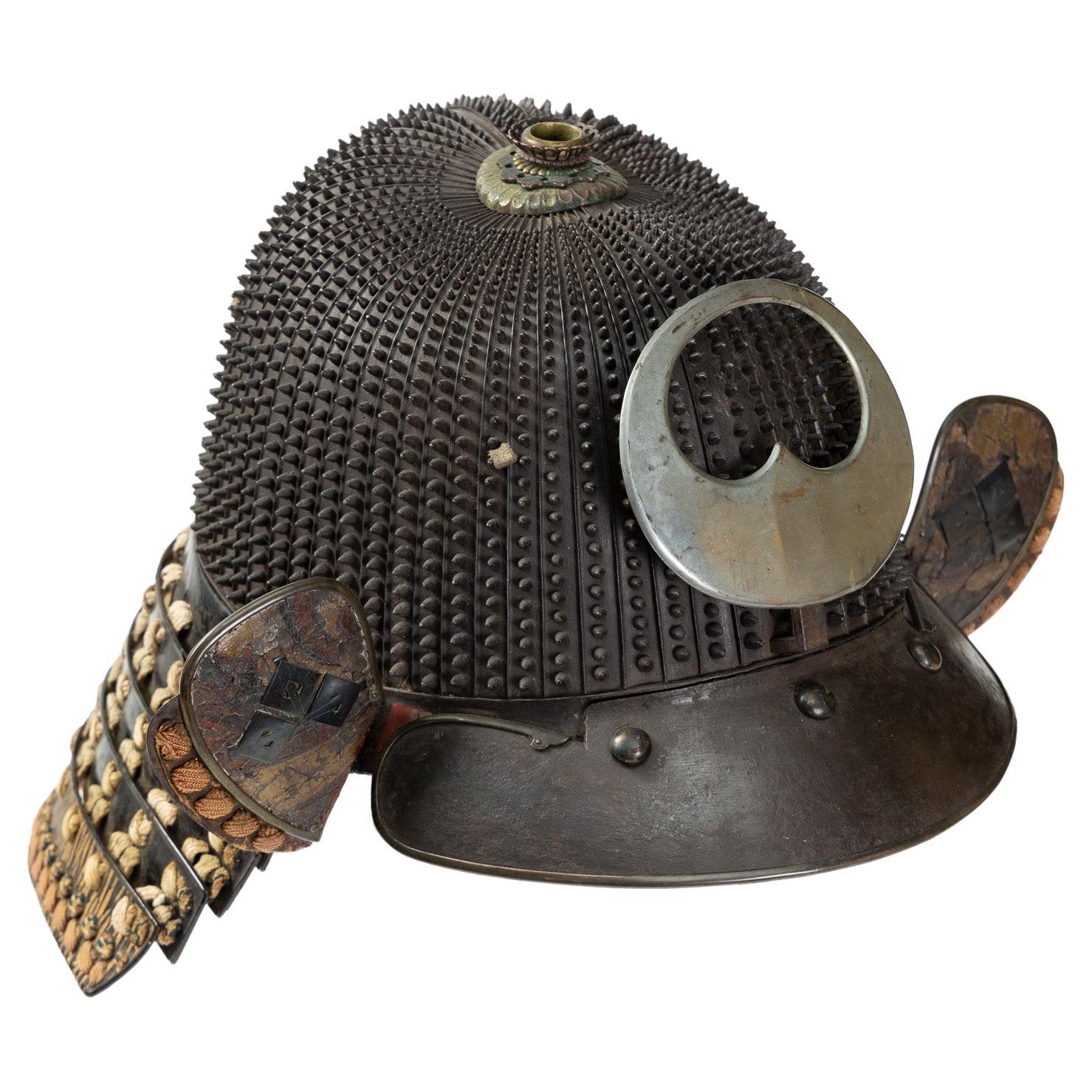Items Similar to Suji-bachi kabuto and menpo Signed by Myōchin Muneaki and dated 1853
Want more images or videos?
Request additional images or videos from the seller
1 of 8
Suji-bachi kabuto and menpo Signed by Myōchin Muneaki and dated 1853
About the Item
Suji-bachi kabuto and menpo
Signed by Myōchin Muneaki and dated 1853
Signature: Kaei 6 - Ushidoshi Oshu Nihonmatsu-ju Myōchin Ki (no) Muneaki saku
Made in 1853 by Myōchin Ki Muneaki in Nihonmatsu castle.
The helmet is a 24-plate suji kabuto with five rows of visible rivets. The shape is rather tall (koseizan), and the fittings, such as the visor (mabezashi) and the maedate holder (haraidate), are beautifully crafted. The five-plate shikoro bears on the fukigaeshi a rare kamon (family crest) made of silver maki-e lacquer, depicting the butterfly (hachō) used by the Taira clan in the ancient times and later taken up by a number of families claiming descent from it, most notably the Matsudaira clan, the shogunate family.
The half-moon shaped maedate shows the “ichi” kanji in the center.
The mask is of the ressei type, of excellent workmanship. The shapes of the nose, ears and chin are those typical of the branch operating in the Ki region, where the Myōchin family of armorers settled in the early Edo period and specialised in embossed metalwork (uchidashi).
The inscription is definitely interesting, as it places the helmet inside Nihonmatsu Castle, which was besieged during the Battle of Aizu in 1868, in which Matsudaira Katamori and the forces for imperial restoration clashed. During the siege, 543 samurai loyal to the shogunate died under the modern weapons used by the imperialist daimyo, trained and equipped by Western armies. The presence of the butterfly kamon, used by the Matsudaira, would confirm the use of the helmet by samurai loyal to the shogunate. The armor associated with these events has almost all been lost or destroyed, and to find a helmet in perfect condition that survived the last Japanese civil battles is undoubtedly an extraordinary event
- Dimensions:Height: 35 in (88.9 cm)Width: 40 in (101.6 cm)Depth: 40 in (101.6 cm)
- Materials and Techniques:
- Period:
- Date of Manufacture:1853
- Condition:
- Seller Location:Milano, IT
- Reference Number:1stDibs: LU4250236281922
About the Seller
5.0
Recognized Seller
These prestigious sellers are industry leaders and represent the highest echelon for item quality and design.
Established in 2005
1stDibs seller since 2018
10 sales on 1stDibs
Typical response time: 1 hour
- ShippingRetrieving quote...Ships From: Milano, Italy
- Return PolicyA return for this item may be initiated within 7 days of delivery.
More From This SellerView All
- Japanese Articulated Iron Jizai Okimono of a Lobster by Myochin MuneharuLocated in Milano, ITThis articulated okimono represents a naturalistically rendered lobster, with fully articulated limbs, antennae, body, and tail and comes with an inscribed wood storage box. Signed:...Category
Antique 19th Century Japanese Metalwork
MaterialsIron
- Samurai Mask with a Fierce Expression Ressei MenpoLocated in Milano, ITSamurai mask with a fierce expression Ressei Menpo DATE Edo period (1615 - 1867), 18th century A red lacquered high-level mask, with fierce (res...Category
Antique 18th Century Japanese Metalwork
MaterialsIron
- Koboshi Kabuto, Samurai Helmet with Standing Rivets Haruta SchoolLocated in Milano, ITKoboshi kabuto Samurai helmet with standing rivets Haruta School Early Edo Period, 17th century A 62-plate koboshi-bachi [helmet bowl with small s...Category
Antique 17th Century Japanese Arms, Armor and Weapons
MaterialsIron
- Tōkanmuri Kabuto Samurai Helmet in the Shape of a Court CAPLocated in Milano, ITTokanmuri kabuto Samurai helmet in the shape of a court cap Momoyama to early Edo Period 17th century The wearing of helmets that reproduced the shapes of traditional ...Category
Antique 17th Century Japanese Metalwork
MaterialsIron
- Sujibachi kabuto 62-plate samurai helmet Haruta school, Edo periodLocated in Milano, ITSujibachi kabuto 62-plate samurai helmet Haruta school, Edo period 17th-18th century A lamellar helmet consisting of sixty-two plates joined with five rows of rivets. The surface is...Category
Antique Mid-17th Century Japanese Metalwork
MaterialsIron
- Sogonari Kabuto Samurai Helmet Shaped as a Human Head Early Edo PeriodLocated in Milano, ITSogonari Kabuto Samurai Helmet shaped as a Human Head Early Edo Period (1615 - 1867). Three-plates kawari kabuto covered with tawny hair to ...Category
Antique Early 1700s Metalwork
MaterialsFur
You May Also Like
- Signed Japanese Edo suji’bachi kabuto (helmet) with a moon & cloud maedateLocated in Amsterdam, NLAn antique, outstanding signed suji’bachi kabuto (helmet with ridges) surmounted by a gilt metal maedate (forecrest) shaped like a full moon emerging from the clouds heightened by a ...Category
Antique Early 19th Century Japanese Antiquities
MaterialsMetal, Iron
- Myochin Style Hiroyoshi Japanese Edo Articulated Metal Rock LobsterBy Myochin HiroyoshiLocated in New York, NYJapanese Edo period articulated rock lobster made of copper, bronze and iron and signed 'Hiroyoshi' on the bottom. Made in the early 20th century (late Meiji/early Taisho period), the piece has articulated limbs, antennae, body and tail. A superb example of the Myochin style. The Myochins were a distinguished family of samurai armorers. As military conflict in Japan abated in the early 17th century and samurai warriors became courtiers, bureaucrats and administrators, the armorers were compelled to adapt their skills by making articulated sculptures...Category
Early 20th Century Japanese Meiji Metalwork
MaterialsBronze, Copper, Iron
- Japanese Samurai Helmet Kabuto Edo Period (1603-1867)Located in Hampstead, QCA Japanese Samurai black-lacquered helmet (kabuto) in suji bachi style and of a goshozan shape consisting of the: - main dome (hachi) made from 16 plates in natural iron riveted to...Category
Antique Early 19th Century Japanese Edo Metalwork
MaterialsIron
- A Japanese bronze sculpture depicting a falcon, signed by KōminLocated in Milano, ITA Japanese bronze sculpture depicting a perched falcon in light patina with polychrome eyes, beak and legs in black contrasting with pure gold. The sculpture depicts the falcon in a moment of serene repose, perched with an aura of regal bearing. Placed on a patinated bronze base, the sculpture achieves a harmonious synthesis of form and texture. This attention to detail showcases the commitment...Category
Antique Late 19th Century Japanese Japonisme Metalwork
MaterialsBronze
- Japanese Silver and Mixed Metal Koro, Artist SignedLocated in Christchurch, GBAs part of our Japanese works of art collection we are delighted to offer this super quality Meiji Period 1868-1912, pure silver and mixed metal koro or incense burner, the heavy sil...Category
Antique 19th Century Japanese Meiji Metalwork
MaterialsMetal, Silver
- A Great Japanese bronze vase depicting a hawk, signed by Masayuki 正之Located in Milano, ITLarge bronze vase with greenish-reddish patina worked in relief depicting a hawk, head turned to the right, on a large branch that wraps around the vase at an angle from the bottom t...Category
Antique Late 19th Century Japanese Japonisme Metalwork
MaterialsBronze
Recently Viewed
View AllMore Ways To Browse
Bronze Asian Fisherman
Chinese Bronze Kettle
Chastity Cage
Turkish Copper Bowl
Incense Burner Rooster
18th Century Cast Copper Statues
Antique Asian Bronze Chariot With Dragon Head
Antique Kick Scooters
Antique Toy Scooters
Asian Trumpet Shape Brass Vase
Bronze Koi Vase
Celebrity Louis Vuitton Men
Ikko Tanaka
K Miyamoto
Louis Vuitton 57th Street
Louis Vuitton House In Las Vegas
Louis Vuitton House Las Vegas
Louis Vuitton In Qatar
